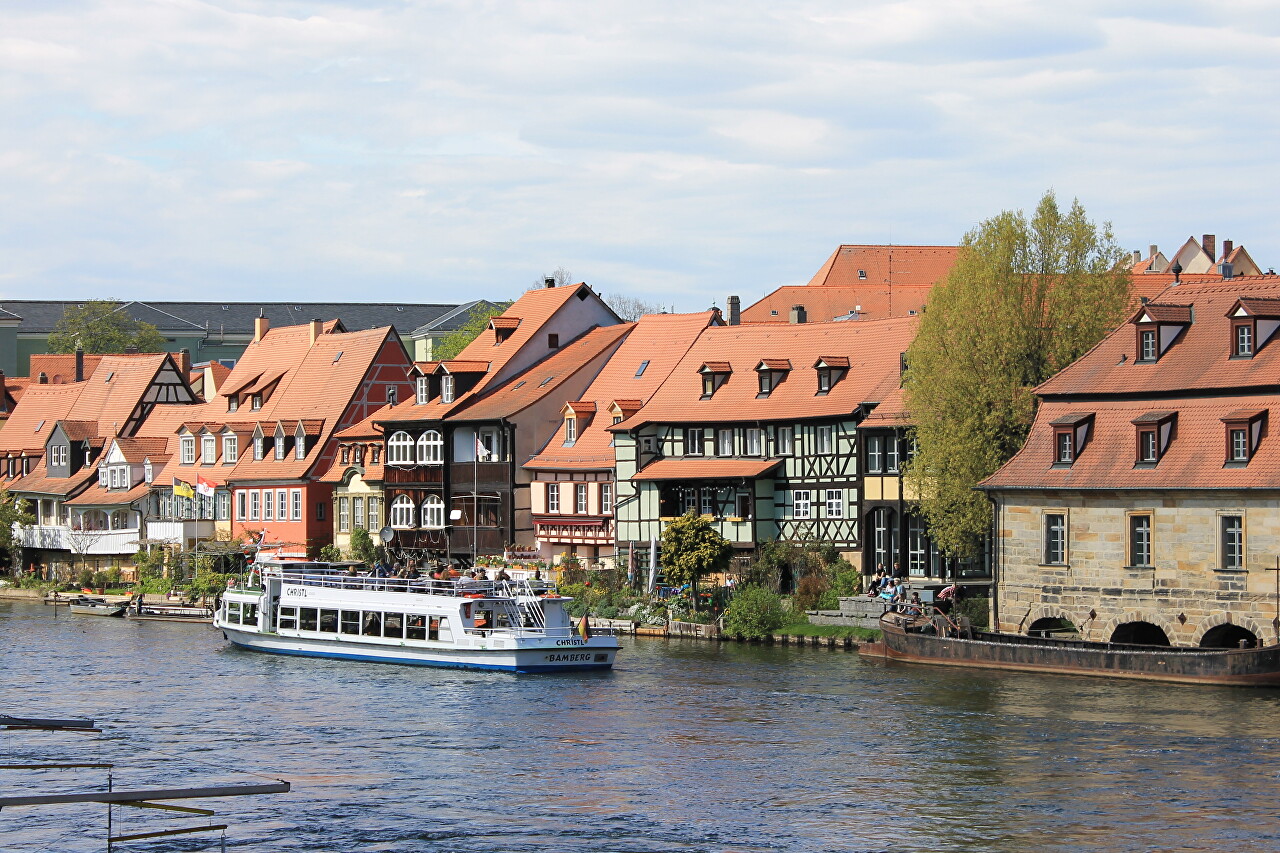Untere Brücke and Cunegonde, Bamberg
The old town Hall is built on an island in the middle of the Regnitz river and is connected to the banks by two bridges named after the direction of the river's flow Untere Brücke (Lower Bridge) and Obere Brücke (Upper Bridge).
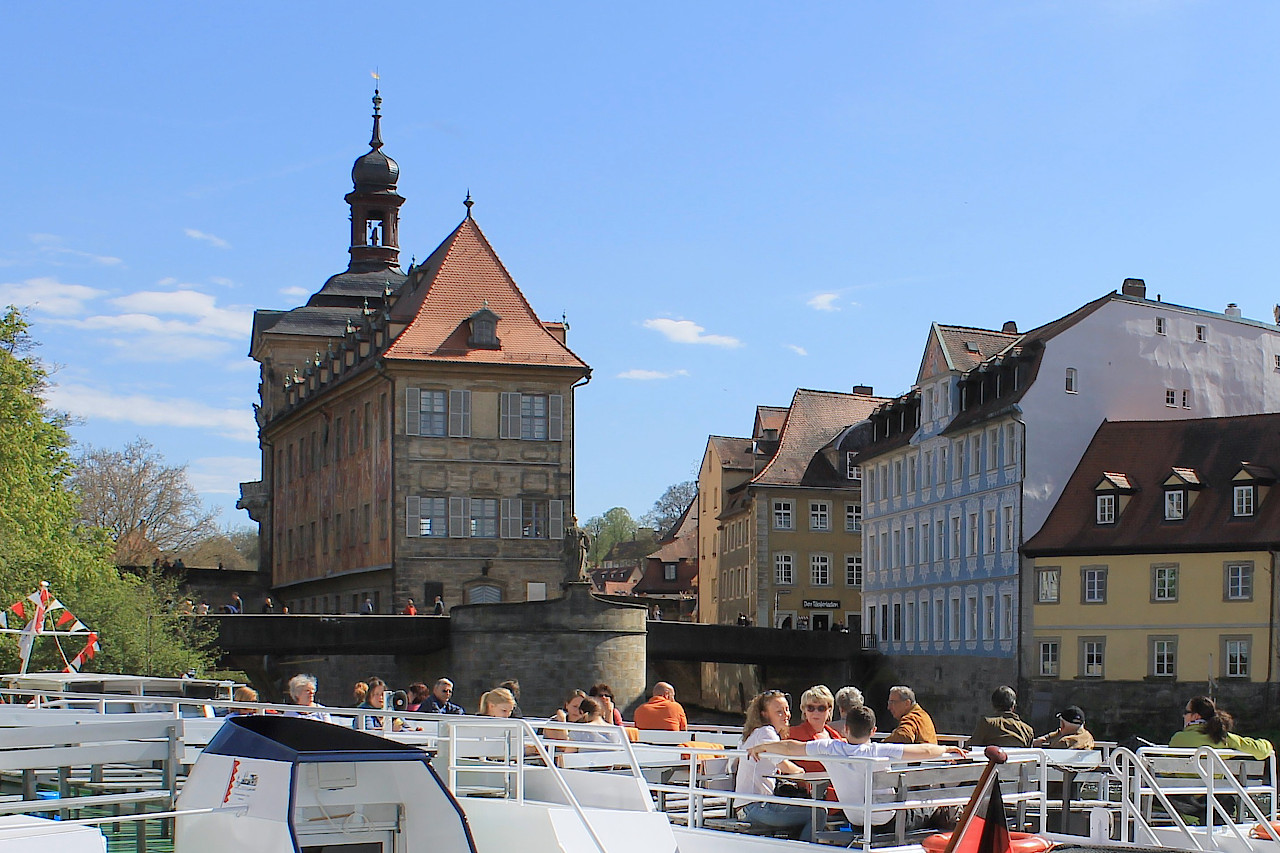
The Lower Bridge was built in the 14th century and would not have survived in its original form, now it is a concrete structure without any architectural excesses. In the Central part of the Unter Bruck, there is a statue of Saint Cunegonde of Luxembourg (St. Kunigunda), the patron of Bamberg.
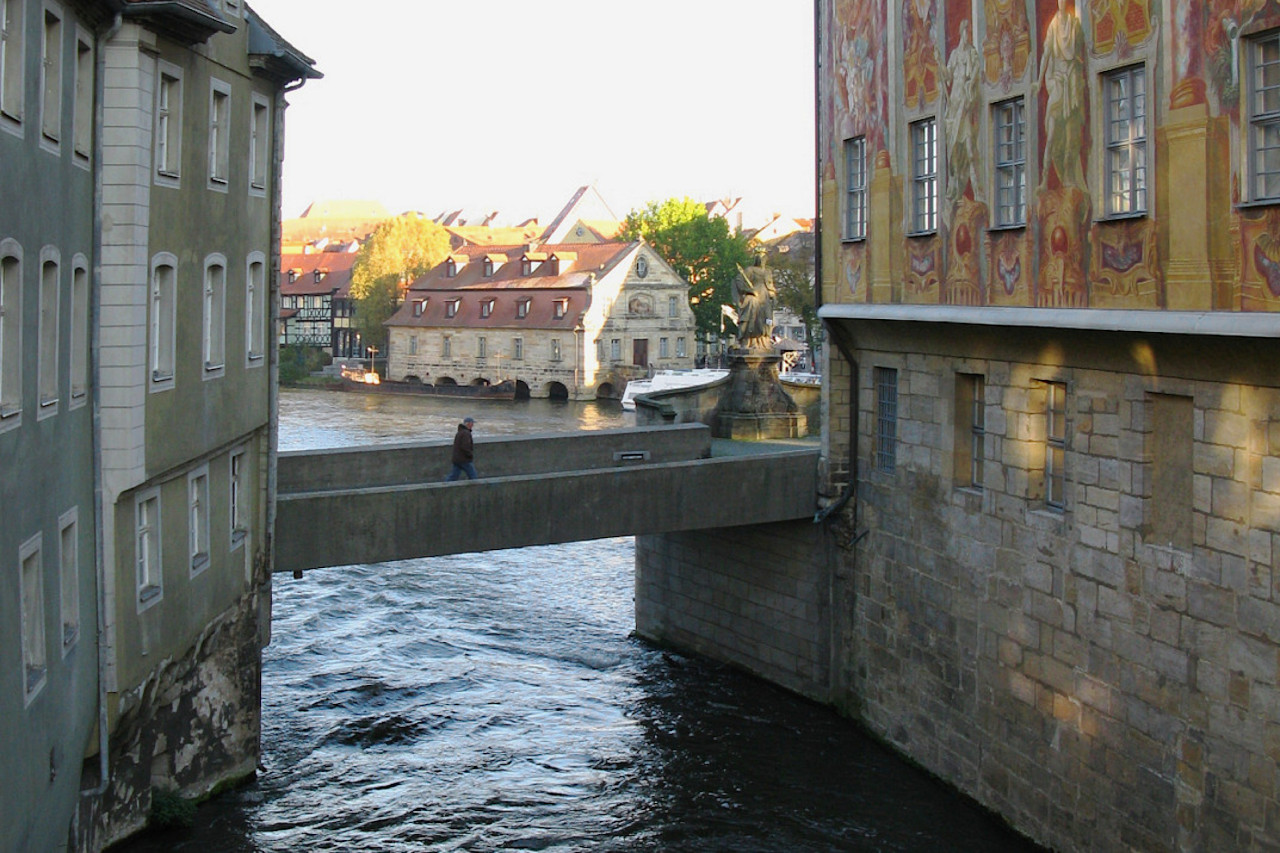
Princess Cunegonde was the first wife of Holy Roman Emperor Henry II (Heinrich II), the first Queen of Germany to be mentioned in historical documents. During the reign of the family, the Foundation of the German state was laid. When her husband was seriously ill and after his death, Cunegonde had to manage the state, as a result of which she earned the reputation of a fair ruler who took care of the needs of her subjects. Cunegonde received Bamberg from her husband as a wedding gift in 1007, when the king established a bishopric here intended to convert the Eastern lands to Christianity, for which Henry II called Bamberg "Franconian Rome". The Queen used her personal funds, including her widow's inheritance, for city purposes.
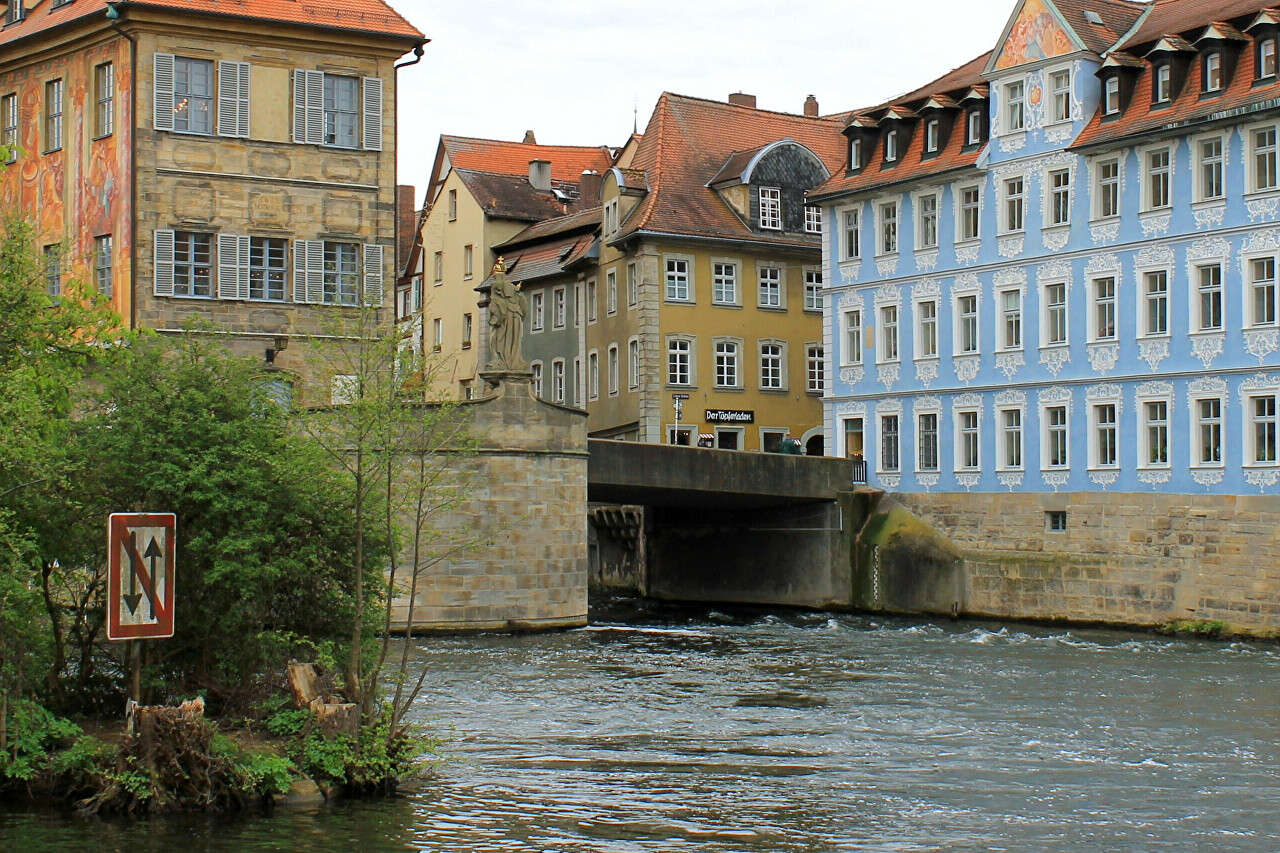
Cunegonde was canonized as a result of this story: the Couple did not have children, because on the day of the wedding Cunegonde made a vow chastity (in fact, this was prevented by the health of the spouses). At one time there were rumors of her infidelity, and Cunegonde dispelled them by standing barefooted on a hot ploughshare. This subject was at one time popular in Church painting. The current monument is a copy of one of the 6 statues of saints that stood on the bridge before the flood of 1784. The latter legend attributes to Kunigunde the salvation of the city from bombing by allied aircraft during world war II. During the raids, the Queen "opened a cloak of mists over the city." However, the Unter Bruck bridge was still destroyed, and the city's neighborhoods were also damaged, although not as much as other German cities. Thanks to this, Bamberg became a world heritage site, included in the UNESCO list.
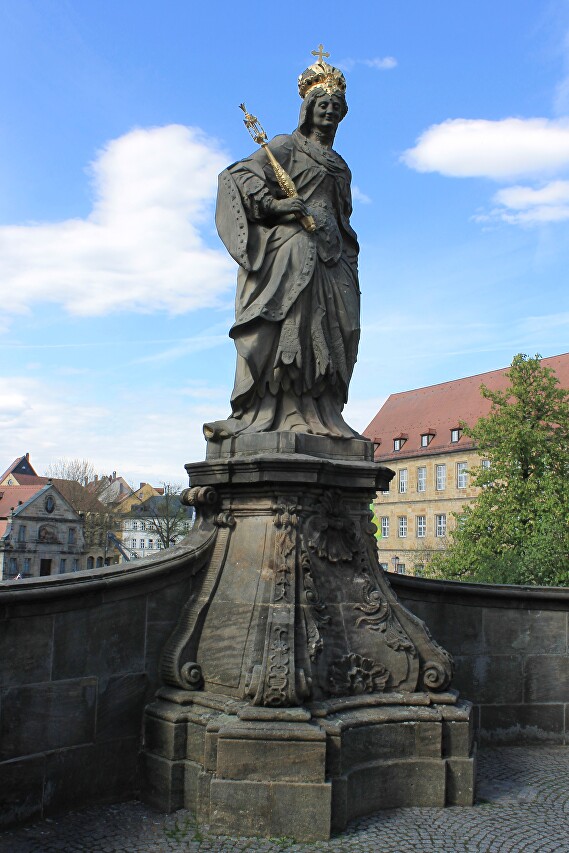
From the statue of Kunigunde offers a wonderful view of the lower course of the Regnitz river.
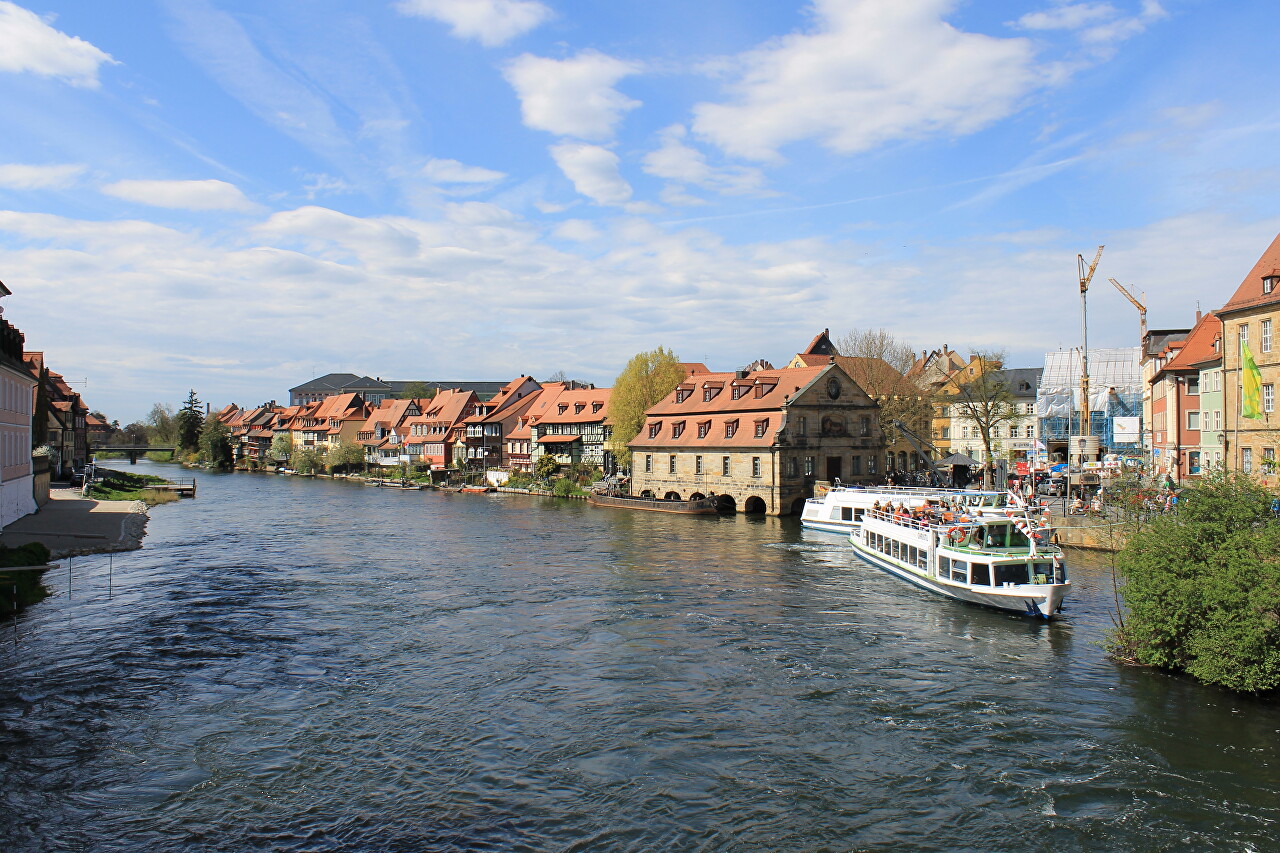
The abattoir building dates back to 1742, and now houses the University library.
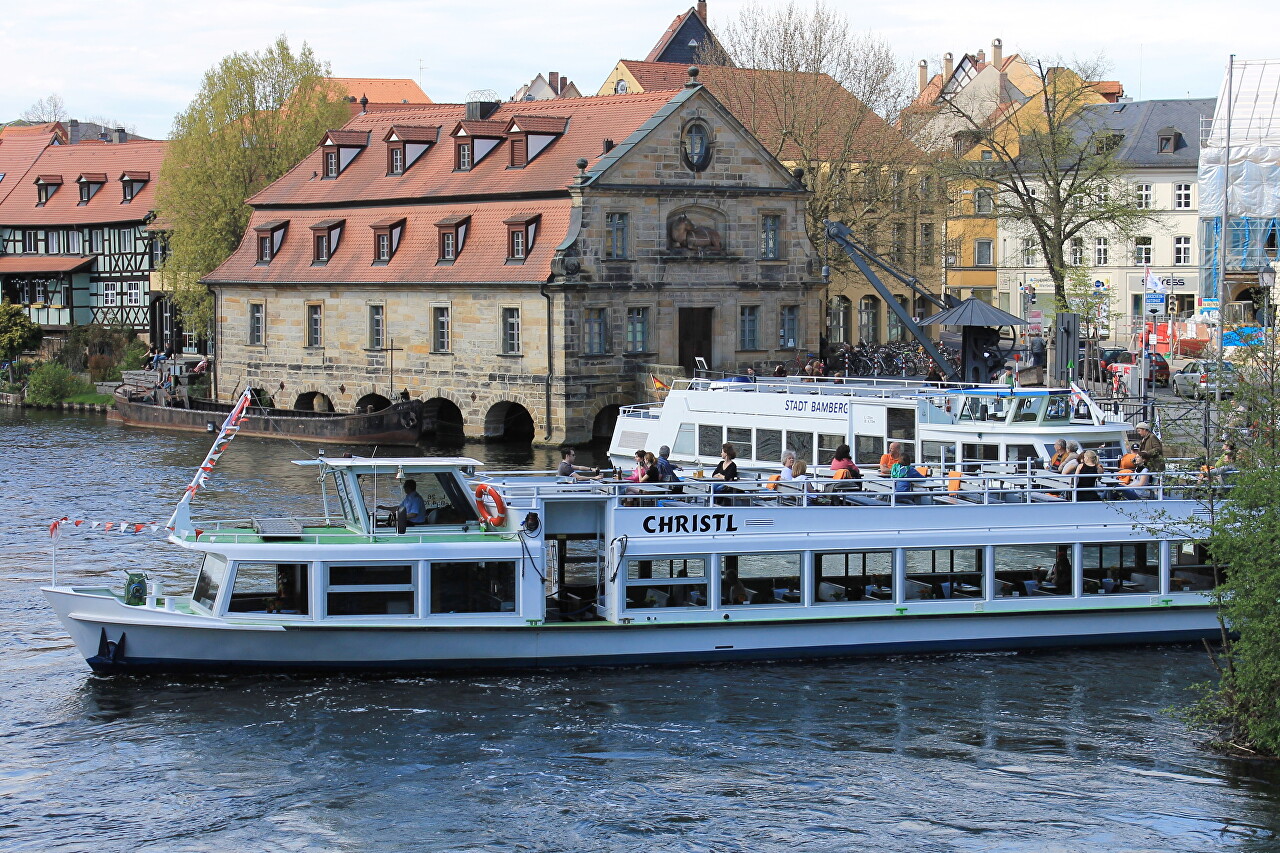
Behind the slaughterhouse, several blocks of houses lined the beach, where the facades of houses face directly to the water, called "Little Venice".
